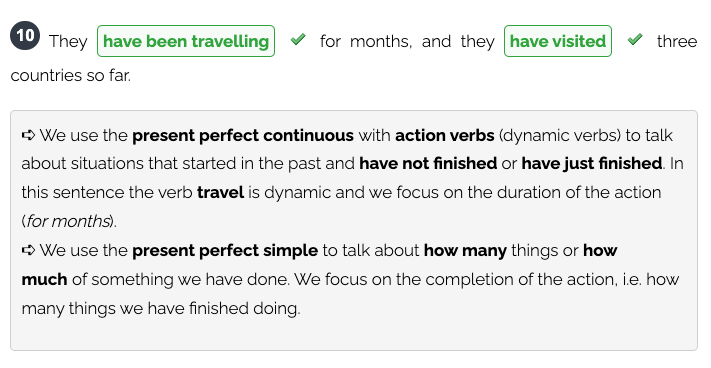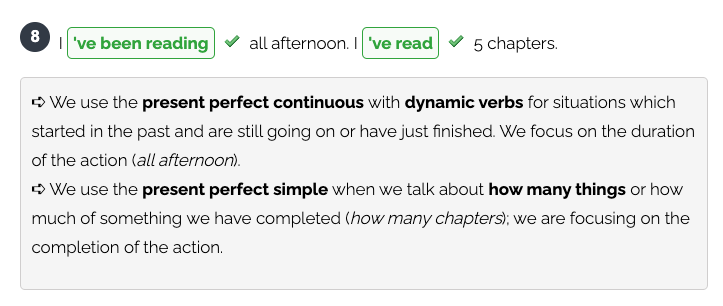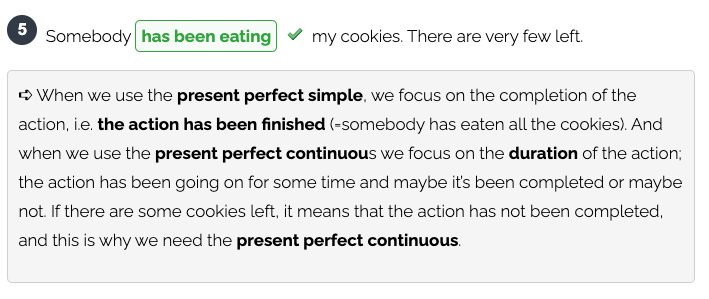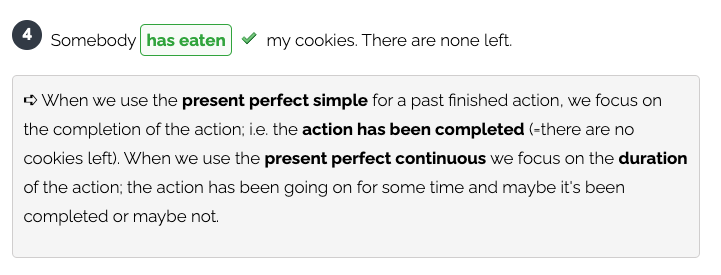ref –
- https://www.grammarwiz.com/difference-present-perfect-and-present-perfect-continuous.html
- https://www.oxfordlearnersdictionaries.com/grammar/online-grammar/present-perfect-simple-and-present-perfect-continuous
- https://www.youtube.com/watch?v=7NGLHYVmr00
Present Perfect: Has/Have + Past Participle
e.g. He has passed his driving test
Present Perfect Continuous: Has/Have + Been + Present Participle
e.g. She has been reading a book
The broad rule is that although both tenses relate to the fact that something is being referred to in the past, the present perfect refers to something that has completed and the focus is on the result of that action, but the present perfect continuous refers to something that is continuing in the present and the focus is on the duration.

Can Choose Either
In some cases we can choose either of the tenses.
This is usually the case when we are referring to biographical type facts about someone’s life, often with the words for and since or some other time frame.
For example:
He’s eaten red meat his whole life
He’s been eating red meat his whole life
He’s worked for the company since he was a teenager
He’s been working for the company since he was a teenager
I’ve lived here for three years
I’ve been living here for three years
They’ve studied English since high school
They’ve been studying English since high school
Short Term or Long Term Action
These facts in the examples above tend to be long-term. However, we tend to use the present perfect continuous to emphasize the fact that an event or activity has been happening over a period of time that is relatively short-term.
I’ve been playing tennis for two hours (short-term)
Compare the long-term, which could be either present perfect or present perfect continuous:
I’ve played tennis most of my life (long-term)
I’ve been playing tennis most of my life (long-term)
Continuing or Completed Action
Another difference between the present perfect and the present perfect continuous is when we want to show whether something is completed or not.
The continuous tense shows that it is not completed.
Compare these:
He has read the book about JFK (the book is finished)
He has been reading the book about JFK (the book’s still being read)
She has taken the medicine (action completed)
She has been taking the medicine (referring to medicine that is being taken over a period of time)
Repeated or Single Action
This is similar to the previous one, but it shows the continuous form can be used to show that something is repeated:
Your wife has phoned you (may have been only once)
Your wife has been phoning you – (she has rung several or many times)
I’ve gone to the local swimming pool (could just be once)
I’ve been going the local swimming pool (indicates going there on several or many occasions)
Examples







State Verbs
State verbs are those that represent a state of mind, such as thinking, knowing, wanting, seeing etc.
Though there are some we can use in the present perfect continuous tenses,
generally most are cannot be used in the continuous tense and
so they are only used with the present perfect:
For instance, we don’t say this:
She has been knowing him for 3 days (X)
He has been seeing the car go past every day (X)
We would say:
She has known him for 3 days (√)
He has seen the car go past every day (√)





